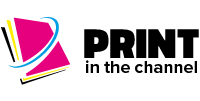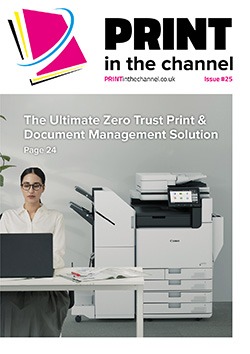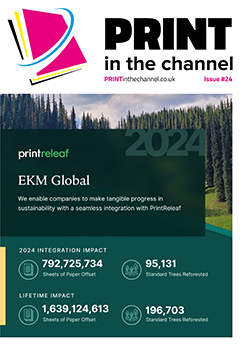Cloud print adoption continues to grow, but some businesses are still concerned over its security – and this is where resellers have an important role to help allay customers’ fears and support them to pick the right solution.
Cloud print adoption has increased over the past year, with 69% of respondents now using a cloud print management solution, up from 55% in 2023, according to Quocirca’s Cloud Print Services Landscape 2024.
Quocirca’s research also showed that businesses are not fully committed to a cloud-only print environment, with print server deployment continuing to increase.
As Matt Riley, data protection and information security officer for Sharp in Europe, notes, there are several reasons for adoption continuing to rise. “The ease and speed of cloud print is accelerating its adoption – and for good reason,” he says. “By simplifying the printing process, users are granted more flexibility while IT teams see lowered overheads due to the reduction in physical connections and dedicated print servers. Unsurprisingly, more are embracing this technology, especially as operations move to the cloud for good.“
Graham Foxwell, product marketing lead, Kyocera Document Solutions UK, adds that cloud print adoption offers an array of advantages for organisations. “Firstly, it reduces costs by eliminating capital expenditure and simplifies print management. With location-independent printing, enhanced security, and better analytics, cloud printing is a flexible and efficient solution for businesses,” he says.
“Kyocera’s native cloud platform technology, Kyocera Cloud Print and Scan (KCPS) provides customers with a fully managed cloud print solution to handle all their copy, print and scan requirements. Cloud-based solutions offer increased flexibility and scalability, allowing companies to adapt to changing business requirements as they arise. As a result, a fully outsourced cloud print solution can be a powerful tool for managed print service (MPS) providers looking to differentiate themselves in a competitive market. This will enable them to provide their customers with added value by performing well in that market.”
Data protection concerns
But as Quocirca’s research found, some businesses are still resistant to adopting cloud print solutions. Data protection concerns were found to be the top barrier to cloud print adoption, cited by 32% of respondents in Quocirca’s research, followed by functionality (25%) and cost (24%).
There are numerous threats out there to cloud print solutions. “As the threat landscape evolves and businesses increasingly employ a wide range of connected devices, bad actors can use MFPs as entry points into business networks,” says Matt. “End users can also – intentionally or unintentionally – compromise MFPs, for example by plugging in USB memory devices.”
Graham adds that the concern among businesses is understandable given the prevalence of cyberthreats. “However, solutions have evolved to counter these issues,” he says. “Cloud-based printing allows secure printing to remote shared devices, with access controls for external users. While security remains a consideration, businesses can weigh the benefits against potential risks and implement best practices to mitigate concerns.
“Also, the shift to a hybrid working model has meant employees are scattered across a plethora of locations, which has increased printing costs while also increasing security risks. KCPS gives organisations ultimate control to increase features of their print and scan environment while controlling overall printing costs through central management. Further still, when it comes to increased document security and managing print and scan costs, KCPS provides the perfect serverless solution for the modern business.”
Andy Johnson, SMB and solutions business development manager at Brother UK, adds: “Workplace requirements are continuing to evolve and we’re seeing this reflected in the volume of businesses adopting cloud print as IT leads reimagine their IT infrastructure for hybrid and remote working.
“But this doesn’t mean compromising on security. We’re working with partners like Tungsten Automation to offer Brother Cloud Solutions (BCS), a portfolio of tools we provide our reseller partners to help customers shore-up security and ensure users can hit print anywhere, any time on any device.”
Reseller role
As described, for many businesses cloud print adoption is still a journey, and resellers have an important role to play in helping customers to choose the right solutions for their business and ensure that it is as secure as possible.
“Resellers will play the role of trusted advisor for businesses with concerns about cloud security and assure customers by facilitating the transition to cloud solutions and helping maintain the system,” says Andy. “For example, Printix, part of our BCS offering, enables customers to change the way they think about print. They can move infrastructure to the cloud, simplify driver and queue management, reduce IT helpdesk calls while also increasing sustainability in their business. Many firms are already migrating services to the cloud – for instance using Office 365 and SharePoint – and Printix fully integrates with EntraID for a seamless roll out.
“Resellers can combine Printix with our cloud managed print service and offer their customers a fully off-premise Printix management solution with automatic sustainable supplies replenishment, document security and simplified device management and support.”
Graham adds that manufacturers, channel partners and resellers can help customers overcome cloud printing security fears in various ways. “Such as by emphasising the specific benefits of chosen solutions, providing training and awareness programmes and ensuring regular monitoring and updates,” he says. “Cloud print ecosystems now incorporate systematic, mandatory security controls.
These include encryption, zero-trust networks and role-based access. This proactive approach promotes secure adoption and addresses any concerns.
“With KCPS, organisations can scale and adapt effortlessly by leveraging a private cloud infrastructure. Doing this can establish security plans that align with predetermined policies from regulatory bodies, ensuring that sensitive data remains protected. By integrating robust encryption protocols and implementing zero-trust networks, KCPS offers a secure solution for printing and scanning needs. Regular monitoring and updates further enhance security, allowing organisations to confidently adopt cloud-based printing while addressing any potential concerns.”
Cybersecurity options
There are also a range of cybersecurity options available, and again resellers have a role to play.
“Not a day goes by when you don’t hear a story about some sort of cyber breach,” says Graham. “This is why it is imperative for organisations to have the right procedures in place to minimise risk. When printing, it’s important that jobs are only released after the user verifies themselves, which can be done with an ID card, PIN code or username and password. Once the user has picked up their document the system should then provide insights into who printed the documents, where they did it from and when.”
He adds that other important security protocols include:
• Secure communication across WAN
• Automatic logout
• Protection of stored data
• Encryption
• Data backup
• Support for third-party authentication and their corresponding identity servers
• Adhere to internationally recognised information security controls and industry-specific compliance standards, such as ISO 27001, HIPAA, FedRAMP, SOC 1 and SOC 2.
“KCPS offers several features that align with organisational security protocols, and by implementing KCPS, resellers can help businesses enhance document security, manage costs and streamline their printing and scanning processes.”
Matt agrees that cybersecurity needs to be approached in a multi-faceted way, and cloud print security is no exception. “A combination of built-in security, controlling access, network security, data protection and user education can build a robust security stature against potential threats,” he says.
“Organisations often overlook MFPs as endpoints to secure. Security needs to be looked at holistically, and this is where the value of a reseller and technology partner shines. By objectively evaluating an organisation’s threat landscape, all end point devices such as MFPs are considered.
“Sharp are already doing this with Bitdefender antimalware technology for MFPs, as well as offering services that allow us to proactively monitor a clients print environment, highlighting unauthorised access attempts and system changes. In addition to our Endpoint Security Solutions, which cover everything from monitoring, automated updates, cybersecurity risk assessments and endpoint history analysis.
“Recently, new PSTI regulations came into place, creating security requirements for manufacturers of relevant connectable products. Sharp has ensured that that any products in the scope of the new regulation are fully compliant. This includes making available Statements of Compliance for each product, detailing the defined support period. In addition, we also have a central point available on our website for end-users to report potential product security vulnerabilities.”
Future
Commentators agree that adoption of cloud print will continue to grow in the future as businesses develop their operations and optimise hybrid working arrangements.
“Customers will be approaching resellers to help them find the right solutions, and as a vendor we’ll be working to support them with the training and toolkits to help them proactively offer their expertise and assurances around the security benefits of cloud print,” says Andy. “We also understand that there are businesses not ready to fully transition to the cloud that will want to take a hybrid approach. Printix allows a hybrid and full cloud approach to suit the customer’s needs.”
Graham adds that it is clear there is a growing need for cloud-based printing and scanning in this new era of agile and hybrid workplaces. “They can be cost-effective, flexible, secure, and easily accessible across the enterprise,” he says. “There needs to be print infrastructure that supports employees in handling document tasks from different locations as offices become increasingly decentralised.”








